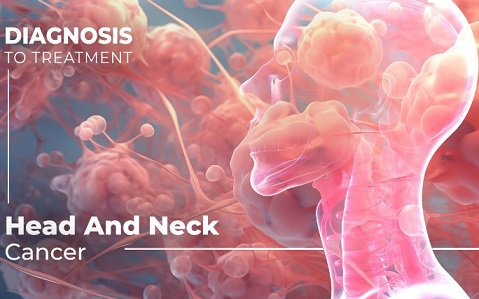Nikhil Prasad Fact checked by:Thailand Medical News Team Jul 09, 2024 1 year, 4 months, 3 weeks, 4 days, 22 minutes ago
Cancer News: Head and neck cancer, particularly squamous cell carcinoma (SCC), poses a significant health challenge globally. These cancers, known collectively as head and neck squamous cell carcinoma (HNSCC), typically originate from the mucosal epithelium lining the larynx, pharynx, and oral cavity. This
Cancer News report discusses recent advancements in understanding and diagnosing HPV-positive HNSCC, based on a comprehensive review by researchers from the University of Rijeka, Croatia.
 New Breakthroughs in Diagnosing HPV-Positive Head and Neck Cancer
The Rising Threat of HPV in Head and Neck Cancer
New Breakthroughs in Diagnosing HPV-Positive Head and Neck Cancer
The Rising Threat of HPV in Head and Neck Cancer
Traditionally, chronic alcohol consumption and tobacco use have been the primary risk factors for HNSCC. However, in more affluent countries, the landscape has shifted with the identification of human papillomavirus (HPV) infection, particularly HPV-16, as a major risk factor, especially among nonsmokers. This shift underscores the importance of understanding HPV's role in these cancers.
HPV: A Game Changer in Cancer Risk
HPV is now recognized as a significant etiological factor in developing HNSCC, particularly oropharyngeal cancers. The virus is primarily transmitted through direct contact, mostly sexual contact, including oral sex. It infects the basal epithelial cells of the mucosal surfaces in the oropharynx, gaining entry through microabrasions in the epithelial lining. HPV can persist in host cells for a long time, with its genome sometimes integrating into the host cell DNA, disrupting normal regulatory mechanisms and leading to uncontrolled cell division and reduced apoptosis.
Understanding the Molecular Mechanisms
The viral oncoproteins E6 and E7 play crucial roles in HPV's oncogenic potential. E6 promotes the degradation of the tumor suppressor protein p53, which normally induces cell cycle arrest and apoptosis in response to DNA damage. E7 binds to and inactivates the retinoblastoma (Rb) protein, leading to unregulated cell cycle progression and proliferation. This disruption in normal cell cycle control and DNA-repair mechanisms leads to genomic instability and an increased likelihood of additional mutations.
Biomarkers: The Key to Early Detection and Treatment
Accurate diagnosis of HPV-positive HNSCC is essential for developing targeted treatment strategies. Researchers have identified various biomarkers in bodily fluids and tissues that offer new possibilities for minimally or non-invasive cancer diagnosis, monitoring, and assessment of therapeutic responses.
-DNA Biomarkers: Circulating tumor DNA (ctDNA) techniques have become increasingly popular in cancer treatment, including screening programs. Early detection techniques based on ctDNA have the potential to improve cancer-screening initiatives significantly. For HPV-positive OPSCC, ctDNA provides a "liquid biopsy" specimen for cancer surveillance and early diagnosis.
-RNA Biomarkers
: The primary oncoproteins of high-risk HPVs, E6 and E7, are essential to the tumorigenesis and development of HPV-positive HNSCC. Oral HPV mRNA testing has shown sensitivity in identifying OPSCCs linked to HPV. The regulation of cellular proteins by miRNAs has been linked to various phases of malignant transformation of cells, making miRNAs valuable biomarkers.
-Protein Biomarkers: Testing for HPV using p16 immunohistochemistry (IHC) is recommended, with optional molecular HPV-DNA testing. P16 IHC is a highly sensitive surrogate marker for HPV-related OPSCC, providing valuable insights into patient prognosis and treatment outcomes.
Emerging Technologies in HPV Diagnosis
-CRISPR-Based Diagnostics: CRISPR-based diagnostic tools, such as the SHERLOCK and DETECTR systems, offer high sensitivity and specificity in detecting HPV DNA. These tools provide rapid results, enabling prompt and precise identification necessary for efficient treatment planning.
-Next-Generation Sequencing (NGS): NGS offers comprehensive genomic insights, distinguishing between distinct HPV genotypes and measuring viral load. It identifies the expression of viral oncogenes E6 and E7, crucial for understanding HPV-driven carcinogenesis and guiding personalized treatments.
-Nanodiagnostics and Biosensor Technologies: Advances in nanodiagnostics and biosensor technologies enhance the sensitivity, specificity, and early detection capabilities of traditional diagnostic methods. These technologies hold promise for improving the diagnosis and treatment of HPV-positive oropharyngeal cancers.
Conclusion
HPV-positive HNSCC represents a complex and evolving field in cancer research. The identification of biomarkers and the development of advanced diagnostic technologies are crucial steps towards precision medicine. These advancements offer hope for better patient outcomes through early detection, targeted treatments, and comprehensive monitoring.
The study findings were published in the peer-reviewed journal: Diagnostics.
https://www.mdpi.com/2075-4418/14/13/1448
For the latest
Cancer News, keep on logging to Thailand Medical News.
Read Also:
https://www.thailandmedical.news/news/study-links-human-papilloma-virus-epstein-barr-virus-and-cytomegalovirus-with-breast-cancer
https://www.thailandmedical.news/news/breaking-hpv-news-one-in-three-men-worldwide-are-infected-with-hpv-virus-which-is-also-an-oncovirus-and-worrisome-in-covid-19-era
